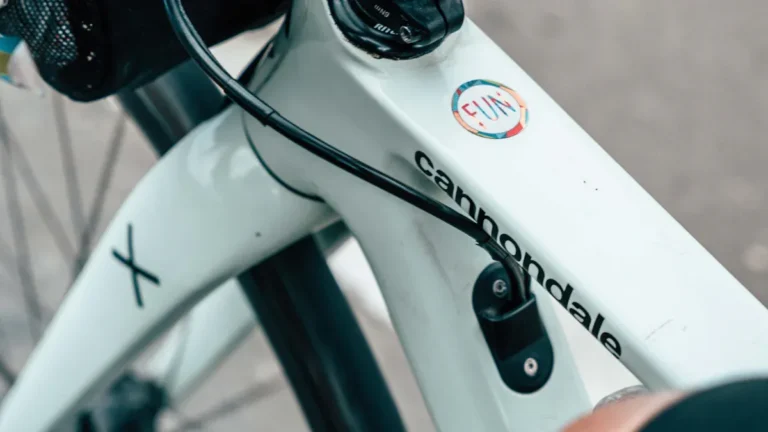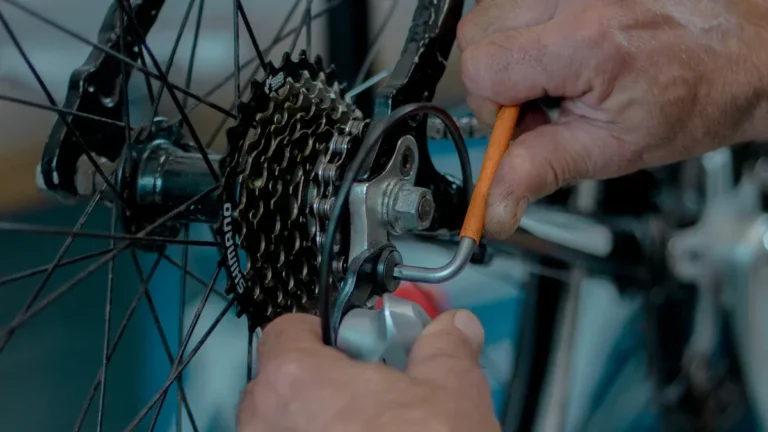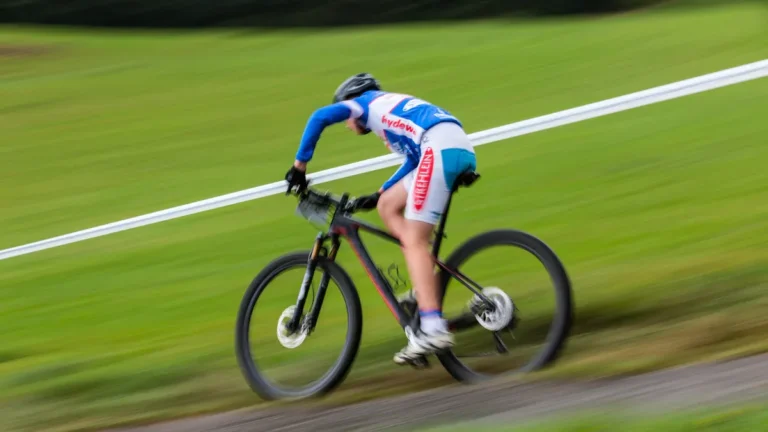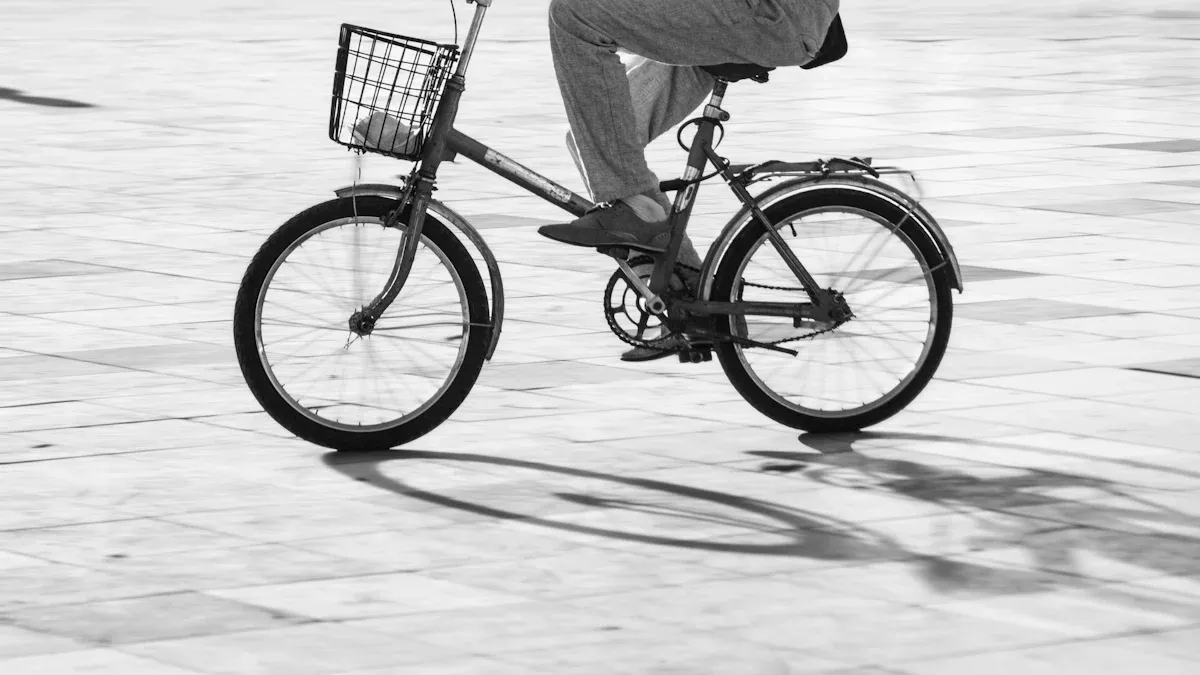
The Biking Revolution in Communist Albania
Discover the history of biking in Albania during communism, where bicycles became essential for transportation, fostering community and sustainability.

In communist Albania, bicycles became more than a mode of transportation. They represented a practical response to limited resources and economic challenges. Government policies encouraged their use, making bicycles accessible to the working class. People embraced cycling as a reliable and affordable way to navigate cities and rural areas. This shift not only addressed transportation needs but also marked a pivotal moment in the history of biking in Albania. Communities adapted to this new lifestyle, integrating bicycles into daily routines and fostering a unique cultural identity.
Key Takeaways
Bikes were very important in communist Albania. They gave cheap rides to workers, students, and farmers.
The government supported biking. They made bikes easy to get and part of daily life.
Riding bikes helped people connect. It let them meet during trips and helped lonely rural areas.
Biking made people healthier. It got them to exercise daily and avoid some illnesses.
Today, Albania is bringing back biking. They are building bike paths and focusing on being eco-friendly, learning from the past.
The History of Biking in Albania
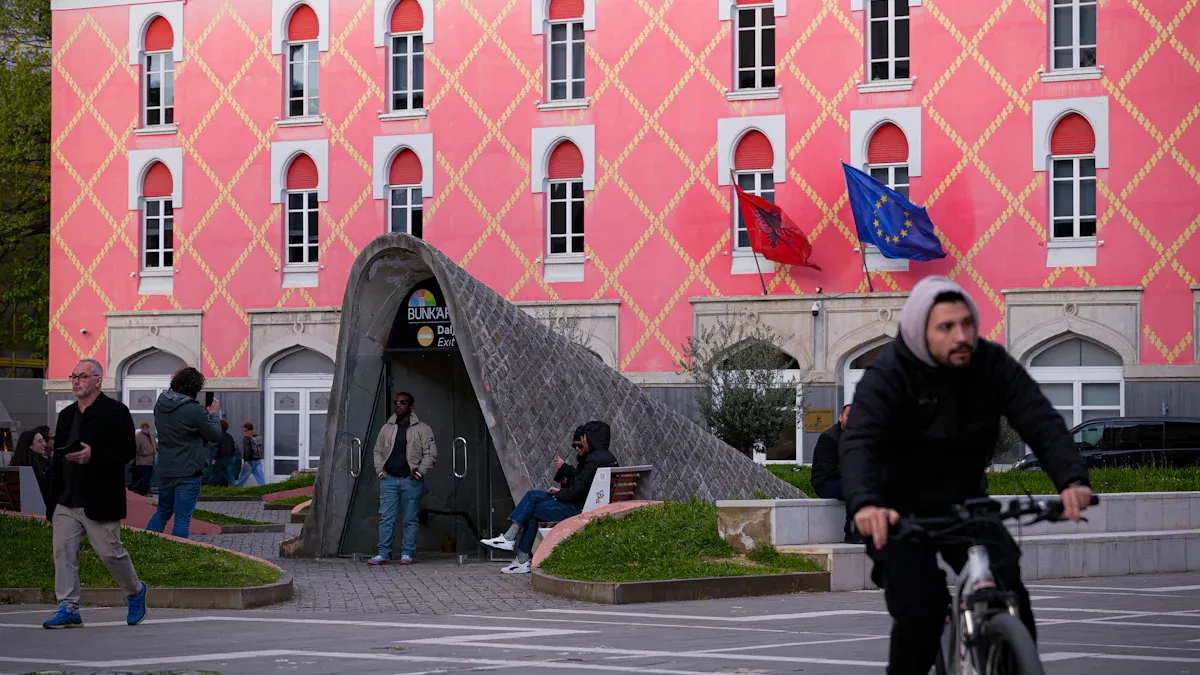
Pre-Communist Era Transportation
Before the rise of communism, Albania relied heavily on traditional forms of transportation. Horse-drawn carts and walking dominated rural areas, while wealthier families in urban centers used private cars. Roads were often unpaved and poorly maintained, making travel slow and challenging. Bicycles existed but remained a luxury item, accessible only to a small portion of the population.
Trade and economic activity during this period depended on limited infrastructure. The lack of modern transportation systems hindered the movement of goods and people. Villages remained isolated, and cities struggled to connect with surrounding regions. This environment set the stage for significant changes in the coming decades.
Early Communist Policies on Biking
When the communist regime took power in the mid-20th century, it prioritized self-reliance and resource conservation. Leaders viewed bicycles as an ideal solution to Albania’s transportation challenges. They required fewer resources to produce than cars and offered a practical alternative to motorized vehicles. The government began promoting cycling as a means of transportation for workers and students.
Factories started producing bicycles domestically to reduce reliance on imports. These bicycles were affordable and durable, designed to meet the needs of the average citizen. Authorities also encouraged their use through propaganda campaigns, emphasizing the benefits of cycling for both individuals and society. Posters and slogans highlighted bicycles as symbols of progress and equality.
Cycling quickly became a central part of daily life. Workers used bicycles to commute to factories, while students rode them to schools. In rural areas, farmers relied on bicycles to transport goods to markets. This shift marked a turning point in the history of biking in Albania, transforming it from a niche activity into a widespread cultural practice.
Government Policies and Infrastructure
Economic Constraints and Accessibility
The communist government in Albania faced significant economic challenges. Limited resources and a focus on self-reliance shaped transportation policies. Bicycles emerged as a cost-effective solution. Unlike cars, they required fewer materials to produce and maintain. Factories began manufacturing bicycles domestically, ensuring affordability for the average citizen. This approach reduced dependence on imports and aligned with the regime’s goals of economic independence.
To make bicycles accessible, the government introduced subsidies. These programs lowered the cost of bicycles, allowing more families to purchase them. Workers and students benefited the most, as bicycles became essential for commuting. In rural areas, farmers used bicycles to transport goods, bridging the gap between villages and markets. This accessibility transformed bicycles from a luxury item into a practical tool for daily life.
Urban Planning for Cyclists
Urban planning during the communist era prioritized cycling infrastructure. City planners designed roads to accommodate bicycles alongside other forms of transportation. Wide lanes and designated bike paths appeared in major cities like Tirana. These changes encouraged safe and efficient cycling, especially for workers commuting to factories.
In addition to road design, the government built bicycle parking facilities near schools, factories, and public spaces. These efforts reflected a broader strategy to integrate bicycles into urban life. By promoting cycling, the regime reduced traffic congestion and minimized reliance on fuel-powered vehicles. This approach also aligned with the government’s emphasis on environmental sustainability.
The history of biking in Albania reveals how these policies shaped urban and rural landscapes. Bicycles became a symbol of progress, connecting communities and fostering a culture of mobility.
Societal Impacts of Biking Culture
Community and Lifestyle Transformations
The widespread adoption of bicycles in communist Albania reshaped communities and daily life. Cycling became a shared experience that brought people together. Workers cycling to factories often traveled in groups, creating a sense of camaraderie. Students riding to school formed bonds during their daily commutes. These shared routines strengthened social connections and fostered a collective identity.
In rural areas, bicycles bridged the gap between isolated villages and nearby towns. Farmers used them to transport goods, enabling more frequent interactions with markets and neighbors. This increased mobility helped rural communities feel less isolated. It also allowed families to access essential services, such as healthcare and education, more easily.
Bicycles also influenced leisure activities. Families often spent weekends cycling together, exploring nearby areas. This new form of recreation encouraged people to spend more time outdoors. It also provided an affordable way to enjoy Albania’s natural beauty. Over time, cycling became a symbol of simplicity and unity, reflecting the values promoted by the communist regime.
Health and Environmental Benefits
The rise of biking culture in Albania had significant health benefits. Cycling provided a form of daily exercise for many citizens. Workers, students, and farmers all engaged in physical activity as part of their routines. This regular movement improved cardiovascular health and overall fitness. It also reduced the risk of lifestyle-related illnesses, such as obesity and diabetes.
The environmental impact of widespread cycling was equally important. Bicycles produced no emissions, unlike motorized vehicles. This helped reduce air pollution in cities and preserved the natural environment. The government’s emphasis on cycling aligned with its broader goals of sustainability and resource conservation. By promoting bicycles, Albania minimized its reliance on fossil fuels and reduced its carbon footprint.
The history of biking in Albania demonstrates how cycling transformed both individual lives and the environment. It created healthier communities while protecting the country’s natural resources. These benefits continue to inspire modern efforts to promote sustainable transportation.
Legacy of Communist-Era Biking
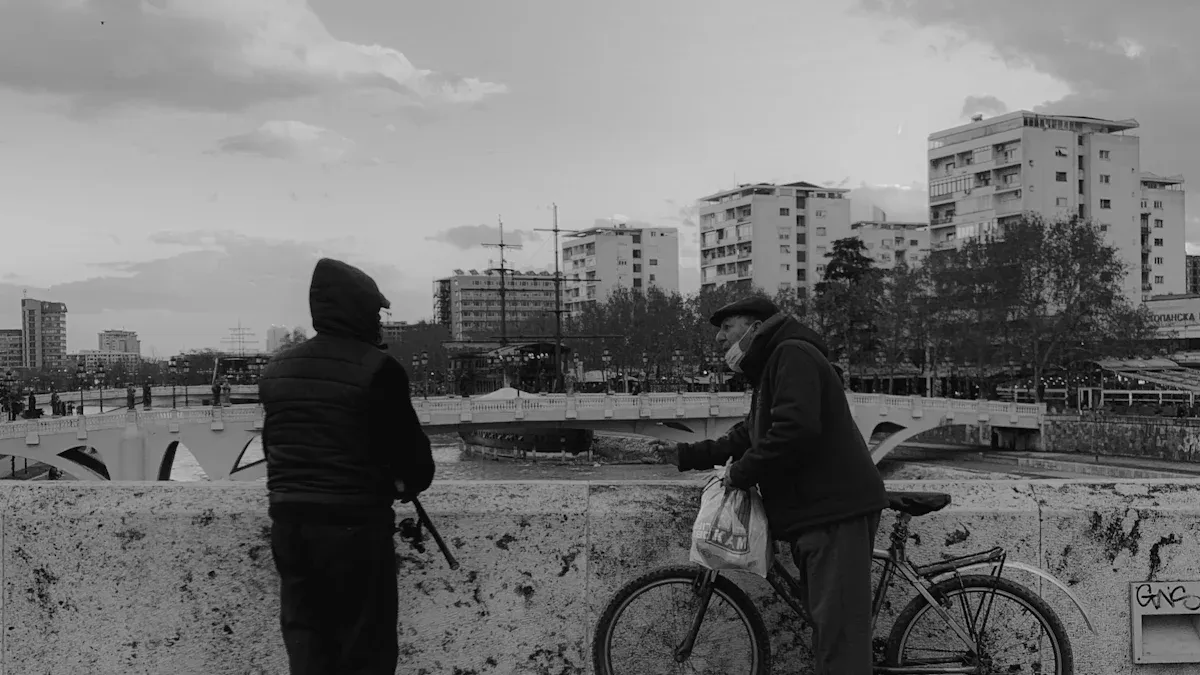
Post-Communist Transition
The fall of communism in Albania during the early 1990s brought significant changes to the country’s transportation landscape. The economic liberalization that followed introduced new opportunities for private vehicle ownership. Cars, once a rarity, became more accessible to the population. This shift reduced the reliance on bicycles as a primary mode of transportation.
However, the transition also created challenges for cycling culture. Urban areas experienced rapid growth, often without adequate planning for cyclists. Roads became congested with cars, and the infrastructure built during the communist era began to deteriorate. Many bike paths disappeared or fell into disrepair, making cycling less safe and less appealing.
Despite these setbacks, bicycles remained important in rural areas. Farmers and villagers continued to use them for short-distance travel and transporting goods. The affordability and practicality of bicycles ensured their survival in regions where cars were still a luxury.
Note: The post-communist period marked a decline in cycling culture in cities, but bicycles retained their value in rural communities.
Modern-Day Reflections on Biking
In recent years, Albania has seen a renewed interest in cycling. Environmental awareness and health consciousness have encouraged people to reconsider bicycles as a sustainable alternative to cars. Cities like Tirana have started investing in bike-friendly infrastructure, including dedicated lanes and public bike-sharing programs.
Cycling has also gained popularity as a recreational activity. Many Albanians now use bicycles for exercise and leisure, exploring the country’s scenic landscapes. This shift reflects a growing appreciation for the health and environmental benefits of biking.
Key modern trends in Albanian cycling:
Urban bike-sharing initiatives
Cycling clubs and community events
Increased focus on eco-friendly transportation
The legacy of communist-era biking continues to influence modern Albania. It serves as a reminder of the practicality and sustainability of bicycles in addressing transportation challenges.
The biking culture in communist Albania emerged from necessity and government-driven policies. It shaped daily life by fostering community bonds, improving health, and reducing environmental harm.
Key Takeaway: Bicycles symbolized resilience and sustainability during a challenging era.
Today, this legacy inspires modern Albanians to embrace eco-friendly transportation. Lessons from the past highlight the importance of practical solutions in addressing societal needs. 🚴
Impact Highlights:
Strengthened social connections
Promoted physical well-being
Reduced reliance on fossil fuels
The story of biking in Albania serves as a blueprint for sustainable living.
FAQ
What role did bicycles play in communist Albania?
Bicycles served as a practical solution to transportation challenges. They provided affordable mobility for workers, students, and farmers. The government promoted cycling to reduce reliance on cars and conserve resources, making bicycles an essential part of daily life.
Why did the government prioritize cycling infrastructure?
The government aimed to support self-reliance and sustainability. Cycling infrastructure reduced traffic congestion, minimized fuel dependency, and encouraged eco-friendly transportation. Wide bike lanes and parking facilities reflected this commitment to integrating bicycles into urban planning.
How did biking impact rural communities?
Bicycles connected isolated villages to nearby towns. Farmers used them to transport goods, improving access to markets and services. This increased mobility strengthened social ties and reduced rural isolation, transforming daily life for many families.
Did cycling culture decline after communism?
Yes, urban cycling declined as cars became more accessible. Poorly maintained infrastructure and road congestion discouraged cycling in cities. However, bicycles remained vital in rural areas, where affordability and practicality ensured their continued use.
How is modern Albania reviving cycling culture?
Cities like Tirana are investing in bike lanes and public bike-sharing programs. Cycling clubs and events promote biking as a recreational activity. Environmental awareness and health consciousness have also encouraged Albanians to embrace bicycles as a sustainable alternative to cars. 🚴♂️
